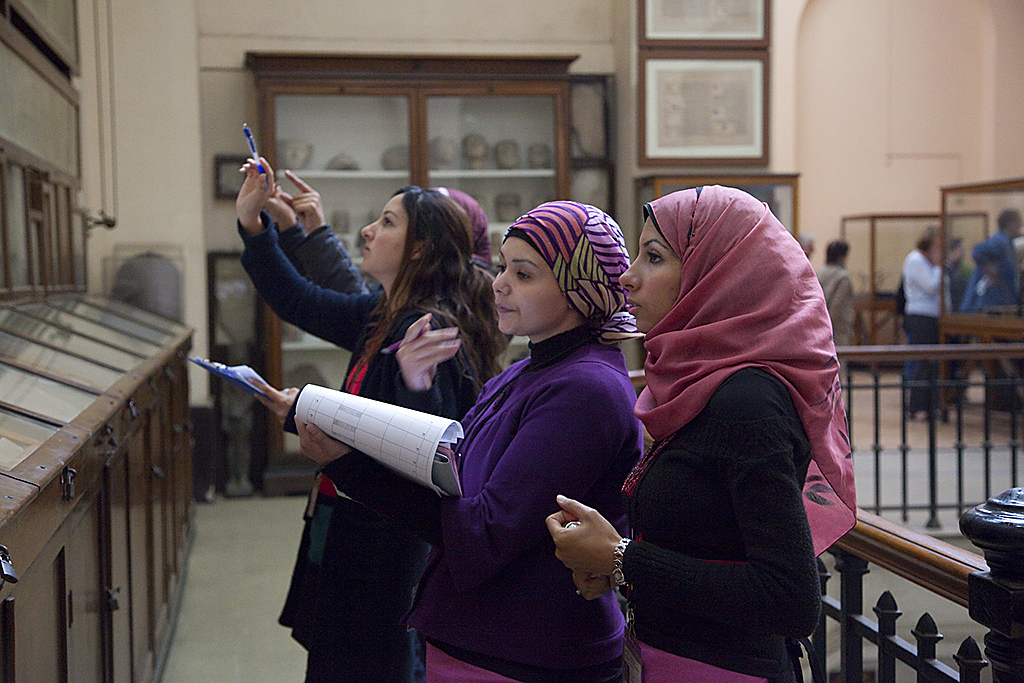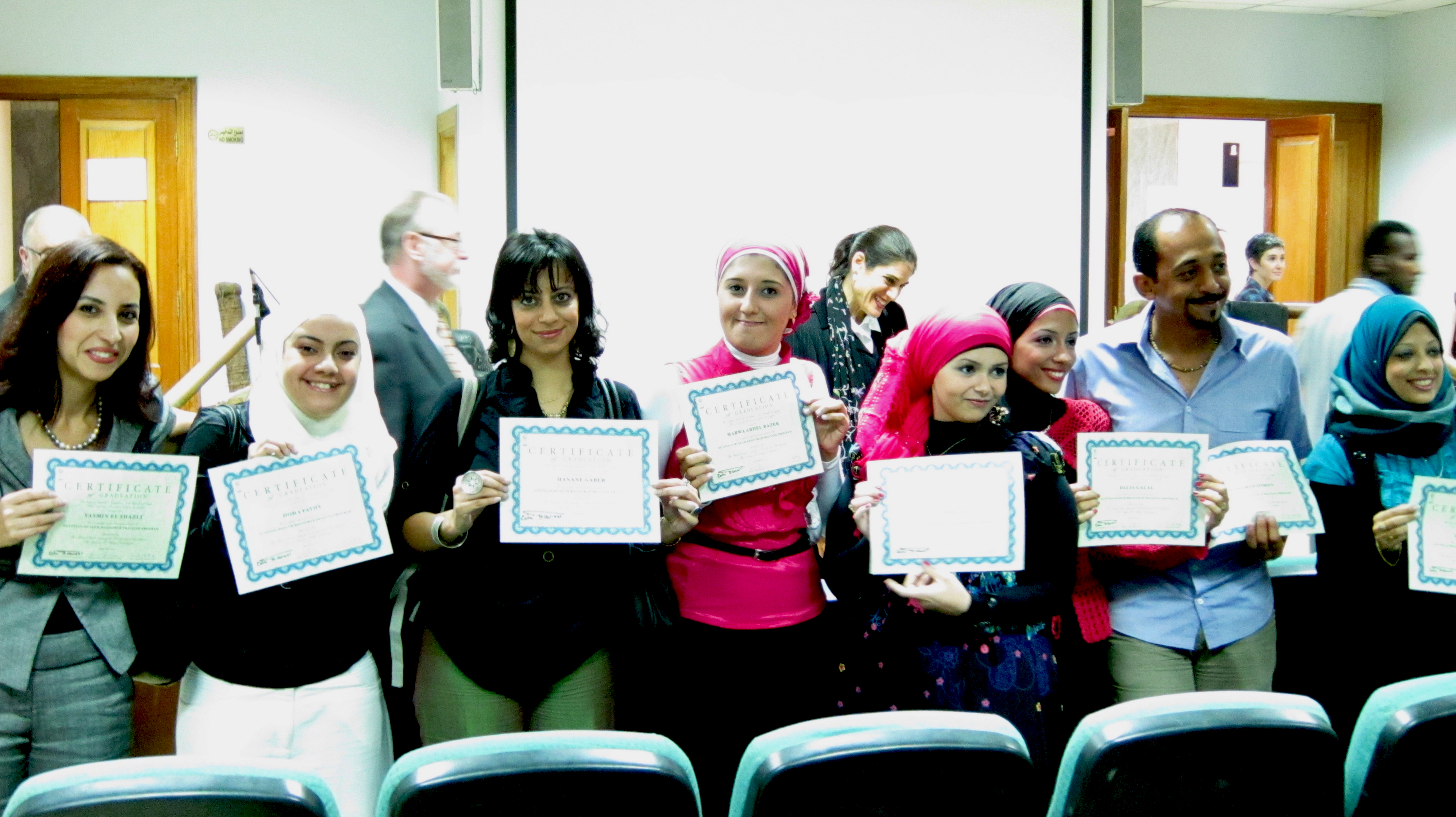- EraModern
- Project DirectorJanice Kamrin
- LocationEgypt
- AffiliationAmerican Research Center in Egypt (ARCE)
- Project SponsorUSAID
- Project Dates2007-2010
- Project ImplementerARCE
In 1830 Jean-Francois Champollion, the French scholar and discoverer of the key to ancient Egyptian hieroglyphs, sent Mohammed Ali Pasha, Egypt’s Ottoman ruler at the time, a letter asking him to construct a building in order to safeguard Egypt’s monuments. Situated within modern Cairo’s Tahrir Square, the Egyptian Museum is now the oldest archaeological museum housing the largest assortment of Pharaonic objects in the world. The museum exhibits a broad collection that ranges from the Predynastic Period to the Graeco-Roman era.
The Egyptian Registrar Training Project for the Egyptian Museum was the idea of previous ARCE Director, Dr. Gerry Scott, was inspired by a special exhibition organized at the Museum. This exhibition included 50 objects that examined the contributions of American archaeologists during the past century. The process of putting together and installing this exhibition proved to be difficult due to the need for a modern, up to date system for archiving these collections. With funds from the Egyptian Antiquities Conservation Project (EAC) through the United States Agency for International Development (USAID), the American Research Center in Egypt (ARCE) carried out improvements to document objects and develop collection management protocols at the Egyptian Museum, Cairo (EMC) from January 2007 to December 2010. This initiative was known as the Egyptian Registrar Training Project and was a crucial step in training the museum’s staff and inaugurating Egypt’s first museum registrar office. The project was conducted with full support from Egypt’s Supreme Council of Antiquities (SCA).
The Registrar Training Project had two goals. The first goal was to choose a group of new registrars and teach them the know-how and politics needed to administer the museum’s collection. This included activities such as, cataloging, acquisition, condition reporting, object handling, preventive care, inventory, loans, appropriate documentation, tracking location and object movement. The EMC’s participating staff were trained over an intensive period of two weeks where they attended 9 seminars. These seminars covered aspects such as in-house exhibitions, inventory, object movement, continuation of loans, accessioning, measuring objects and creating object files. The second goal focused on tracking the EMC’S collection by evolving and maintaining a digitized collections management system. ARCE worked with the SCA throughout this project to train a group of nine Egyptian registrars and generate the first collections management and registration department in Egypt.
Corresponding with the EAC-USAID project were two other projects that aimed to expand the database collection and conserve the museum’s registration record books. Funded by ARCE’s Antiquities Endowment Fund (AEF), the Egyptian Museum Scanning Project emphasized both preservating and digitizatizing the museum’s handwritten record books. Through funds from the Andrew W. Mellon Foundation, the Egyptian Museum Database Project – the second parallel project – was able to acquire a management software system for the museum’s collection and train museum staff on how to utilize it.
Registrar training, gallery inventory.
The initiative to digitize the museum’s handwritten books was lengthy, and took place from 2005-2008. This was due to the continuous use of these registers over the past century, hence making their condition poor. Throughout this project, the Journals d’entrées and Temporary Registers were color photographed digitally and had new copies printed from the digital files, so that the fragile originals could be conserved and archived. In the four years since the training was established in 2007, much has been achieved in terms of tracking and registering objects. The museum was able to access new items, including registering objects in the Journal dʼéntrée and completing database records for new or never-before registered objects. The other achievement of this training is that by 2011 ARCE was able to act as liaison between photographers and scholars along with the museum staff. This relationship allowed the museum to take responsibility for obtaining additional data that included photographs and object information, which became part of the museum’s records. Additionally, the EMC took the lead on making sure all object records both in the museum and in the database are up to date and easily accessible.
On September 19, 2010, Egyptian archaeologist, Dr. Zahi Hawass, previous ARCE director, Dr. Gerry Scott, and ARCE board member and associate curator at the Metropolitan Museum of Art, Dr. Janice Kamrin, hosting a graduation ceremony at the SCA for the participants of the Egyptian Museum Registrar Training Project.
Yasmine El Shazly (far left) and other participants of the Egyptian Museum Registrars’ program, during graduation.
The value of the project and its impact on the collections management system at the EMC came to the forefront in 2011, when for the first time in Egypt’s history, the museum was broken into on January 28, 2011. More than a dozen glass display cases were shattered and items were dispersed all around the museum. The trained staff acted quickly to record lost objects in the midst of the chaos going on outside the museum, and thankfully many of the missing and damaged items were salvaged.


